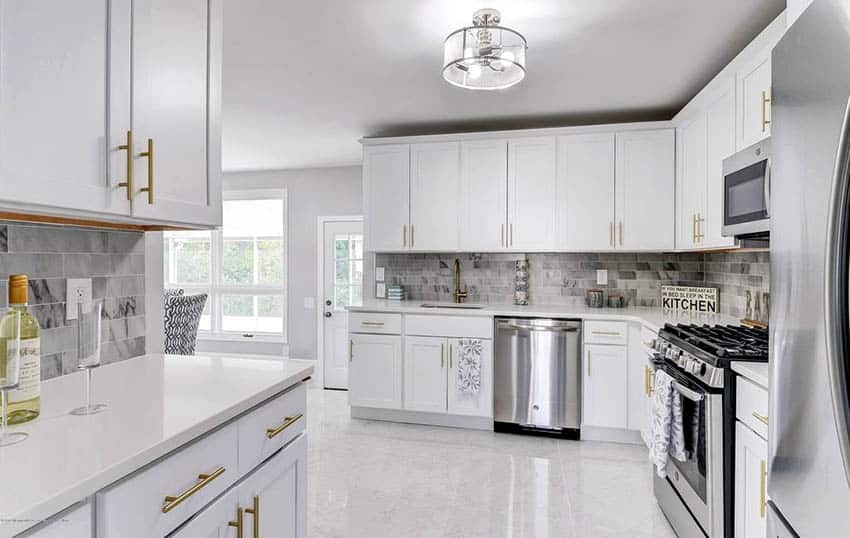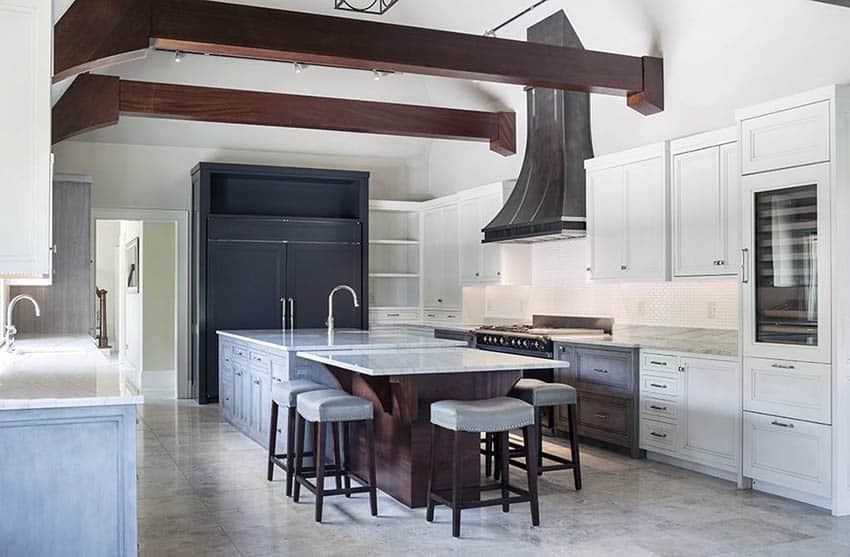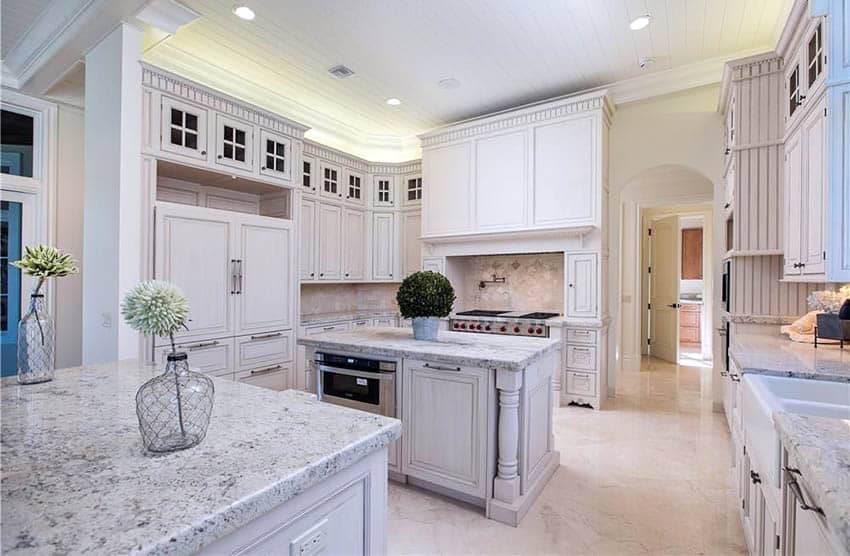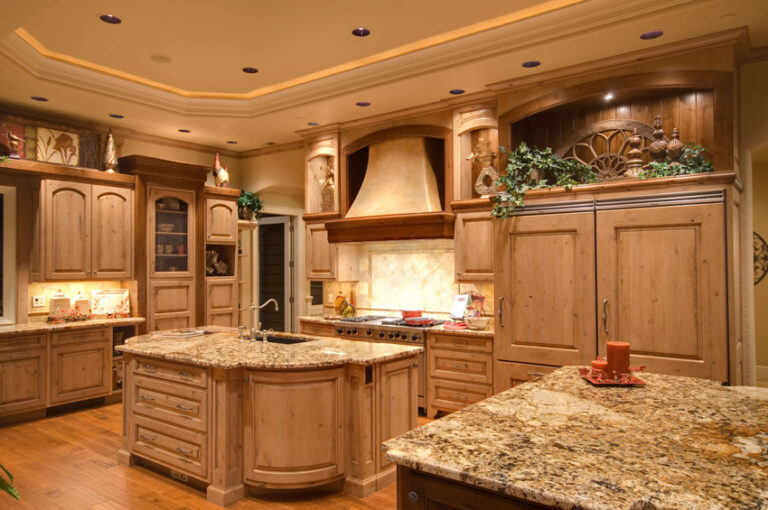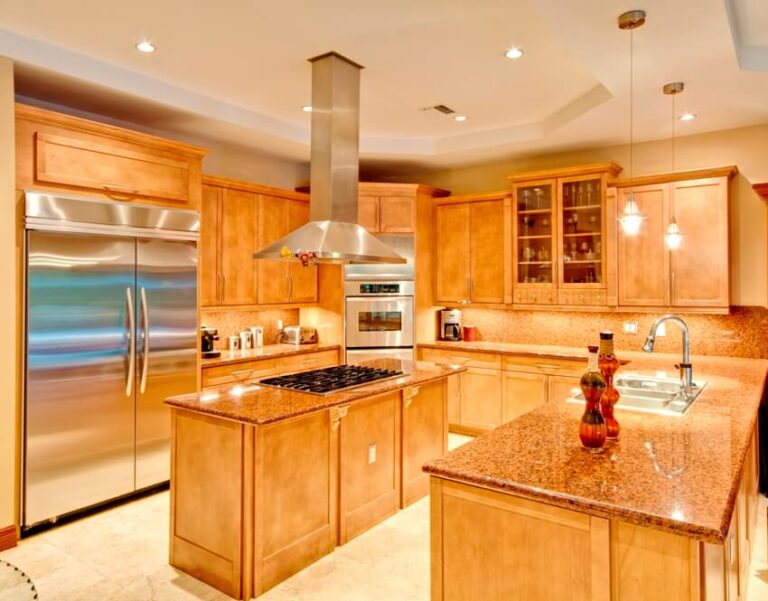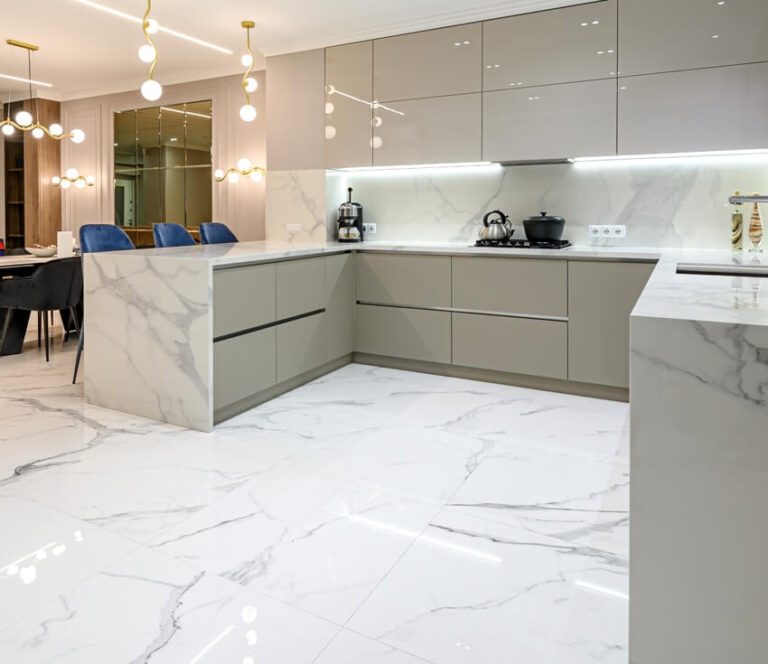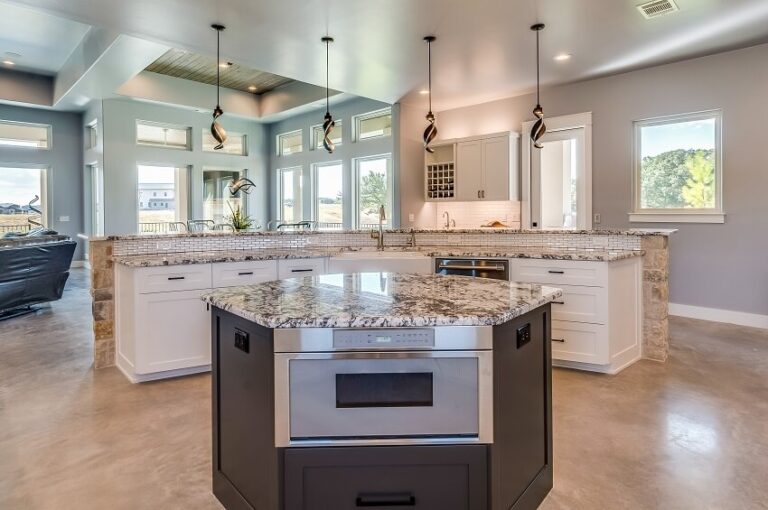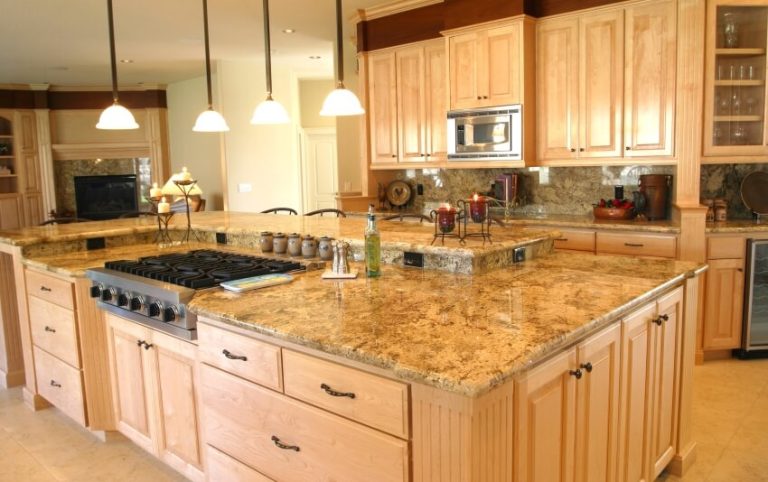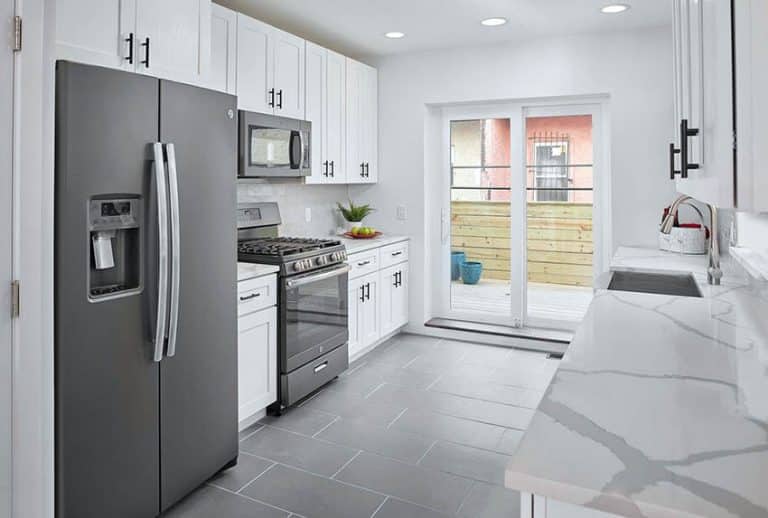White Marble Kitchen Ideas (Beautiful Designs)
Welcome to our gallery of white marble kitchen ideas including popular types, backsplash, flooring and countertop designs.
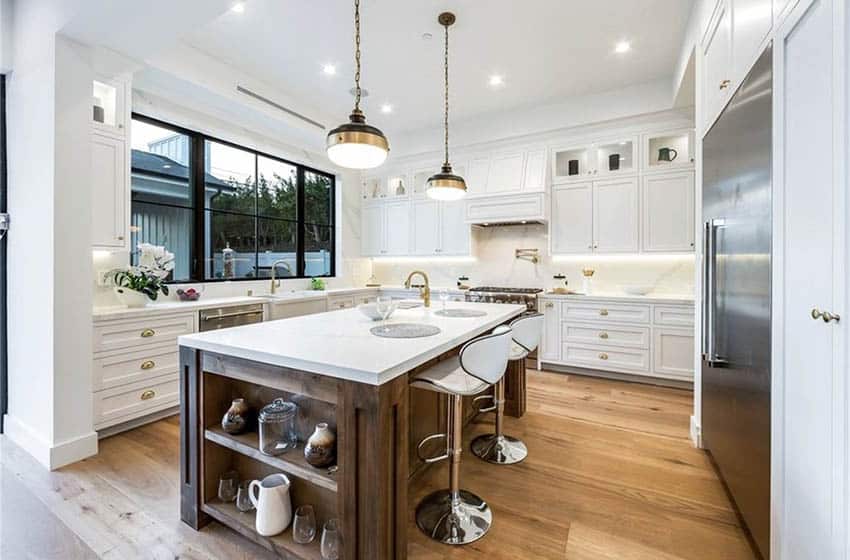 White marble has been used in kitchens for a long time. It has survived many design periods and has proved its aesthetic timelessness and adaptability. It is no surprise that this material brings a classic elegant appeal to any kitchen, making it feel more luxurious. It is usually used on kitchen countertops, and also found on backsplash in the form of solid slabs as well as marble tiles.
White marble has been used in kitchens for a long time. It has survived many design periods and has proved its aesthetic timelessness and adaptability. It is no surprise that this material brings a classic elegant appeal to any kitchen, making it feel more luxurious. It is usually used on kitchen countertops, and also found on backsplash in the form of solid slabs as well as marble tiles.
Marble is a beautiful natural stone that can have a big impact anywhere in a kitchen, with many different options. It can be refined into tiles, mosaics and even as simple but exquisite looking slab countertops.
White marble in particular can be paired with many other finishes in the kitchen to add some extra dimension to the space. Some fresh ideas could be pairing the marble with wood or concrete. By having one piece of marble in the kitchen, for example, the island, can push that into becoming the focal point of the kitchen, or even the home altogether. While using this material on all countertops, and even other surfaces in the kitchen will create an overall upscale, elegant space.
Polished white marble countertops and backsplash can be paired with striking black cabinetry to make the white stand out against its dark opposite. Having it polished and leaving the dark wood cabinetry in a matte finish will allow contrast to bring every ounce of focus to the marble with a modern feeling to the entire space. [toc]
White Marble Kitchen Countertops (Popular Types)
There are many types of white marble, and all of them posses different material characteristics. Depending on your location, locally available marble types, slab size and thickness, the prices would vary. The most popular and commonly used marble are the following:
Carrara – the most popular type, Carrara is known for its subtle gray color caused by the soft, thin veining against white background. Since the color and patterns and very soft and subtle, it’s easy to match with any existing cabinetry.
Calacatta – this Italian marble is a more expensive counterpart of the Carrara. This specific type is known for its warm tone and its veins which vary in size and thickness. Compared to the overall gray tone of the Carrara, the Calacatta veins come in beige, gold and gray.
Statuario – another highly-prized Italian marble, this type is particularly favored for use on sculptures. It has a distinct bright white color, coupled with the grey veining similar to Calacatta.
Thassos – this comes from Greece, and is known for its sparkly and bright appearance. It has been used since ancient times, and has been seen applied in both kitchens and bathrooms to give it a brighter atmosphere. Unlike the previous marbles which are known for their unique veins, this type has very little color gradation and is mostly prized for its clean and pure color.
White Himalayan – another Greek marble, this type has very similar characteristics to Carrara, but has veins that varies in color, raning from gray, brown to purple hues placed against a clean, white background.
Mystery White – if you want a more subtle look and don’t like the bold contrasts of other types, the Mystery White marble could be a better match, as it has cream-colored veins all throughout, as opposed to grays.
Is Marble a Good Choice for Kitchen Countertops?
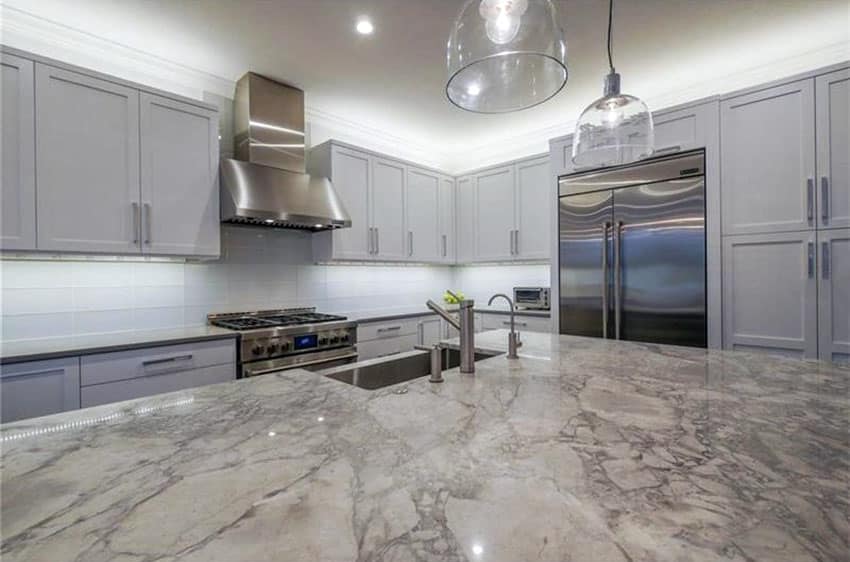
On the flip side, marble is not only expensive, but also requires maintenance as it is a relatively porous material. It is also quite heavy, and is prone to stains, so you need to make sure you use it on surfaces where you don’t expect to place ingredients that can possibly stain that countertop.
If placed on low-traffic areas, this material can be a long-lasting materials, but also do note that marble is softer compared to other stones, and is prone to nicks and cracks, so proper maintenance and care is a must.
One of the most important things to remember when choosing these countertops is that they are porous! This means that they can allow oils and stains into the stone itself. Marble is also softer than both quartz and granite, meaning potentially more scratches and chips.
This could be a detrimental con if one has individuals in their home (ex: children) that may not respect the countertops as much as they should. In some cases using a quartz countertop may be a better option based on the situation. If this is a worry though keep in mind that there are sealers and polishes that can help protect from these vulnerabilities.
Having children shouldn’t hinder anyone from having their dream kitchen! Especially because even when a Calacatta counter does get a small scratch, they’re barely noticeable unless the lighting and angles are just right, well in this case just wrong! Everything is all about taking care of the marble and loving the way it becomes part of the kitchen.
While designing with marble countertops you may also want to carry it throughout the space onto the island. A kitchen island is perfect for entertaining or even just spending extra time while cooking with the family. An island is a counter that is detached from all sides, frequently one counter protrudes over the base of the counter. This allows for stools to be placed underneath to promote gathering in the kitchen.
Once people start gathering in the kitchen the homeowner can not only show off their cooking skills but also the glorious marble island, which will be sure to get many compliments. That being said, islands come in all shapes, sizes and uses. Some islands include plumbing and/or electrical, which can allow for a sink, plugins, and even a stovetop. If that is out of the budget though sticking with base cabinets is still a great option, or even a table island.
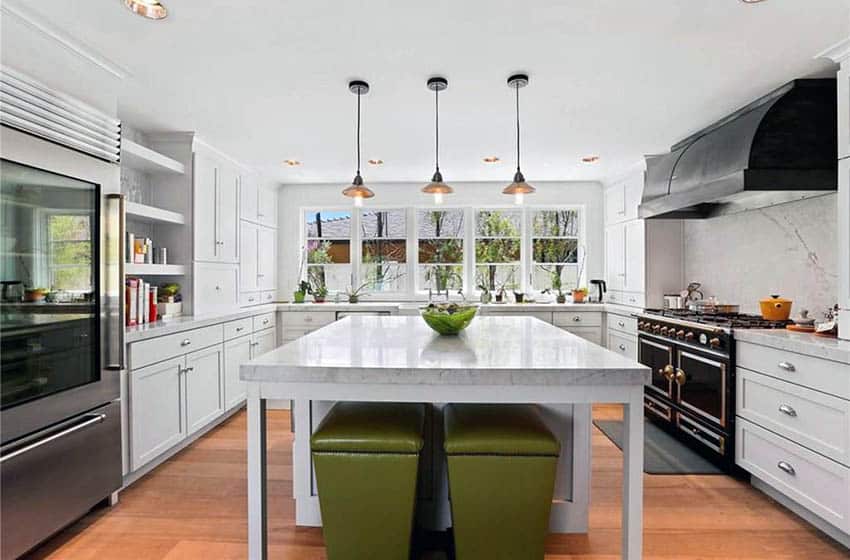
Marble Countertops Cost
Natural stones are typically going to be more expensive than man-made stone. This being said there are many cost effective savings while still getting the luxury of marble. Different colors can also increase or decrease the price, as well as location, thickness, and design of the pieces.
Roughly marble countertop prices are around $125-$250 per square foot including installation. This puts you into a pretty competitive market with other available stones but still a bit above due to paying for the premium stone.
Marble Top Kitchen Island
Kitchen islands are often the focal point of kitchens, mainly due to its layout placement, so it is natural to see countertops in this material being placed on kitchen islands to showcase its beauty. The large surface area of kitchen islands also allows you to use bigger slabs that showcase the unique patterns of this natural stone.
Multiple types of islands are available as well, base cabinet island, table island, fully functioning island, waterfall island, double tiered island, basically the possibilities are endless. Each of these options come with its own way to design and add marble features.
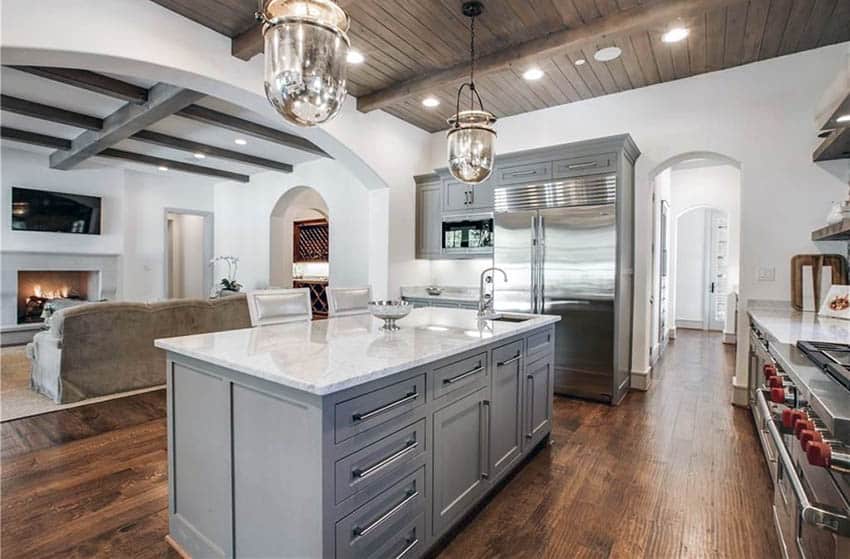
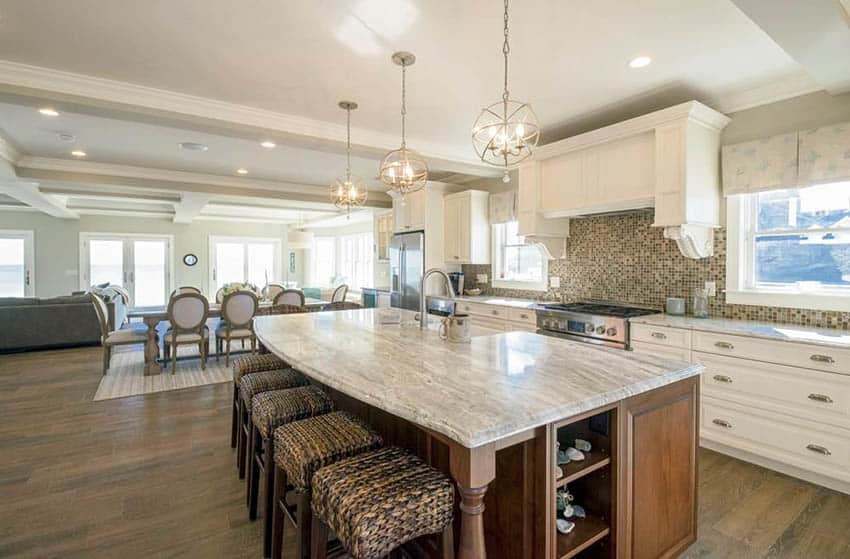
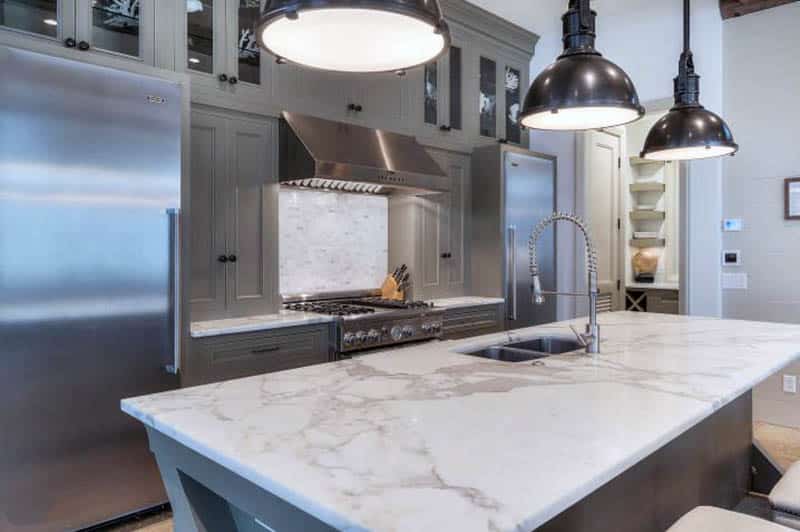
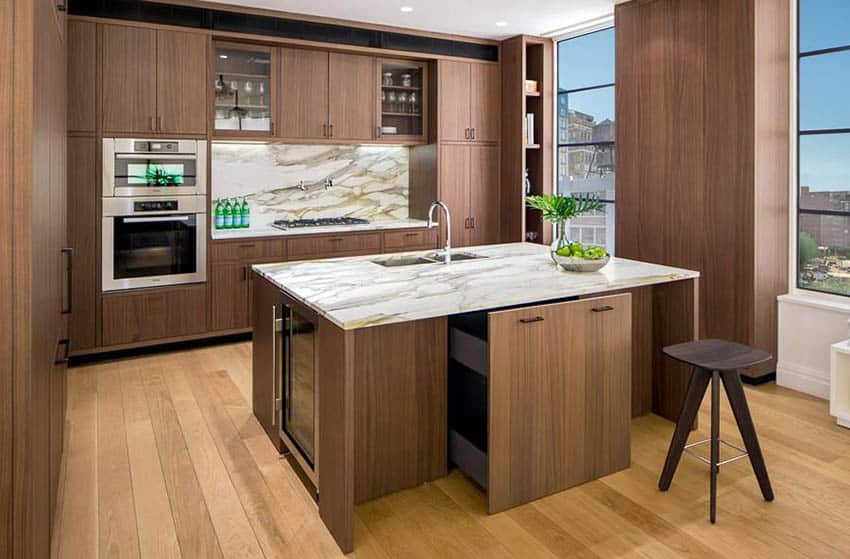
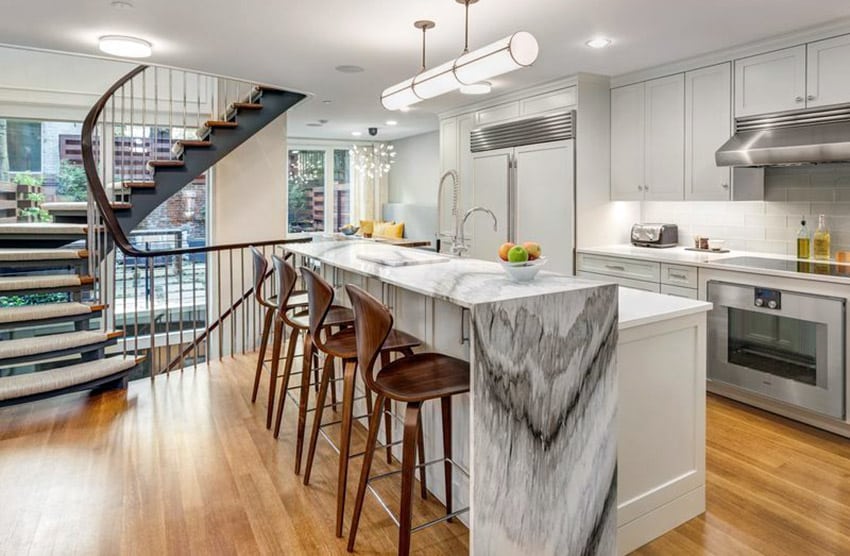
What sets this waterfall design bar counter apart is that it uses a book-matched pattern instead of a full slab with random pattern. This allows consistent repetitive patterns on the top and the sides of the countertop. The bold black veining stands out against the bright white background, making the whole bar area stand out from the rest of the plain white kitchen.
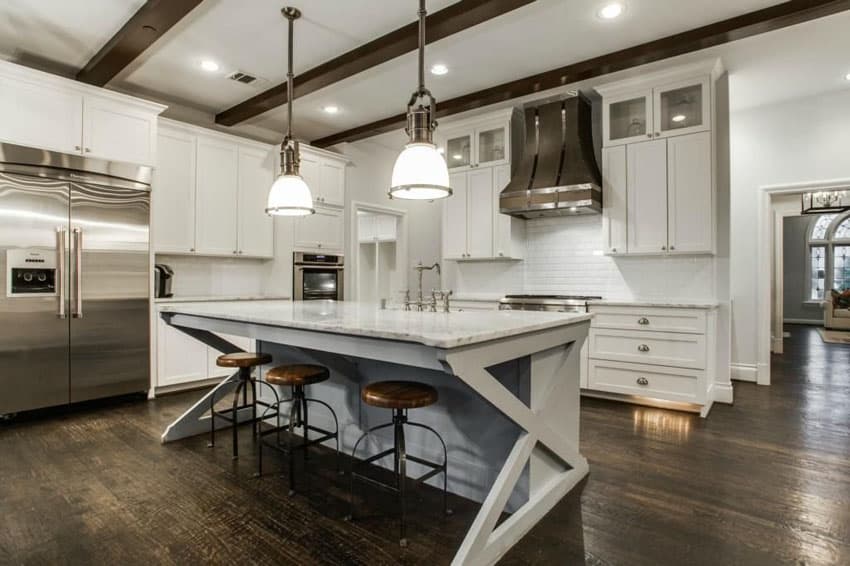
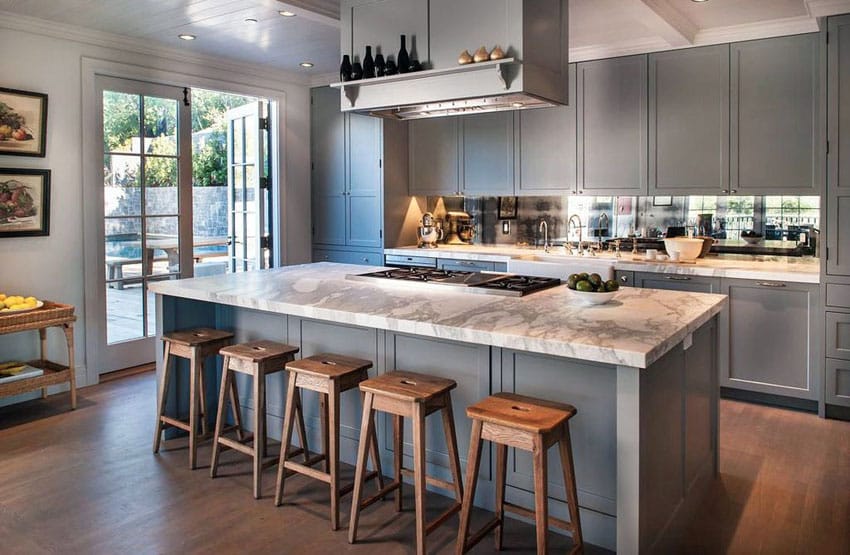

Portable Marble Top Kitchen Island
If replacing your existing countertop would be too costly, another way to add marble into your space is by using portable kitchen counters. These are small, freestanding countertops that you can easily move around the kitchen. They are available both custom and ready-made, in different design styles to match your existing kitchen.
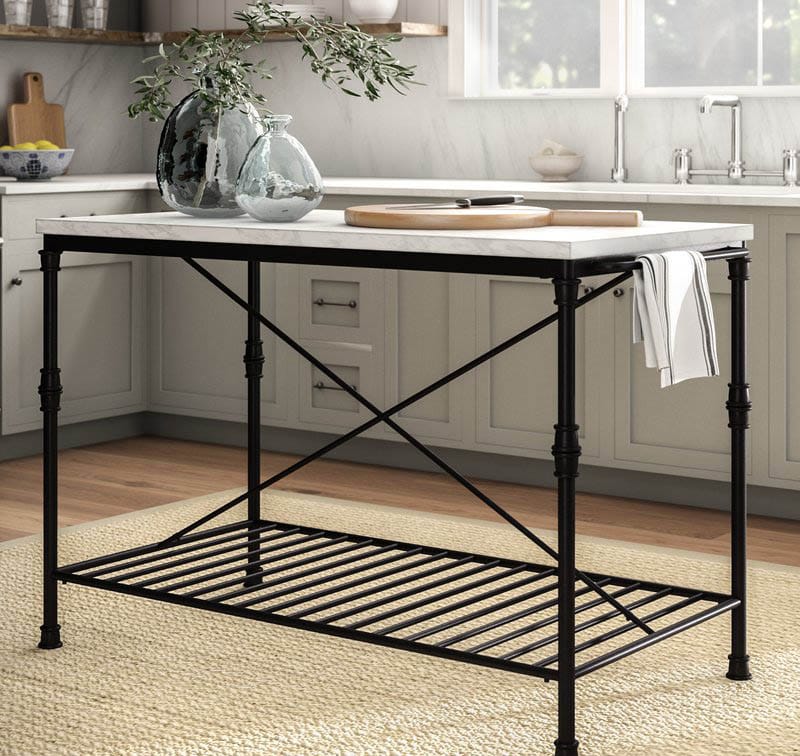
This simple portable countertop is small and light because of its open metal leg base. This allows you to easily move it around the space. Because of its slim size, you can easily add this even on smaller kitchens.
Marble Backsplash Kitchen
Backsplashes can add spice to a kitchen, this is where a designer can get down to business. Backsplashes are typically drawn towards the (you guessed it) back of the countertops to avoid any of the (you guessed it again) splashes that may occur. Being shoved into the back means designers need to get creative so that the backsplash doesn’t just fade and hide away under the cabinets.
Marble mosaics can add just that extra pop that makes guests see the backsplash among all the other beauties in the kitchen. While mosaic backsplashes are a popular option there are other choices that may work better in the home.
Slab backsplashes are also available to tie in with the countertops as well as marble tiles that you can use to make any desirable patterns, possibly even a custom mosaic! This is where the creativity can run wild and the colors can be bolder and different because the backsplash is not directly in people’s faces and allows a smaller area to be vocal and eccentric.
A popular application of white Carrara in kitchens is the backsplash since it requires less daily maintenance. Compared to countertops, applying Carrara on the backsplash would not subject it to as much as wear-and-tear from cracks, moisture and stains, and would, therefore, definitely last longer. It usually gets exposed to oil and moisture when placed near the cooking range and the sink, but the amount of moisture it is exposed to is way less than when you place it on countertops.
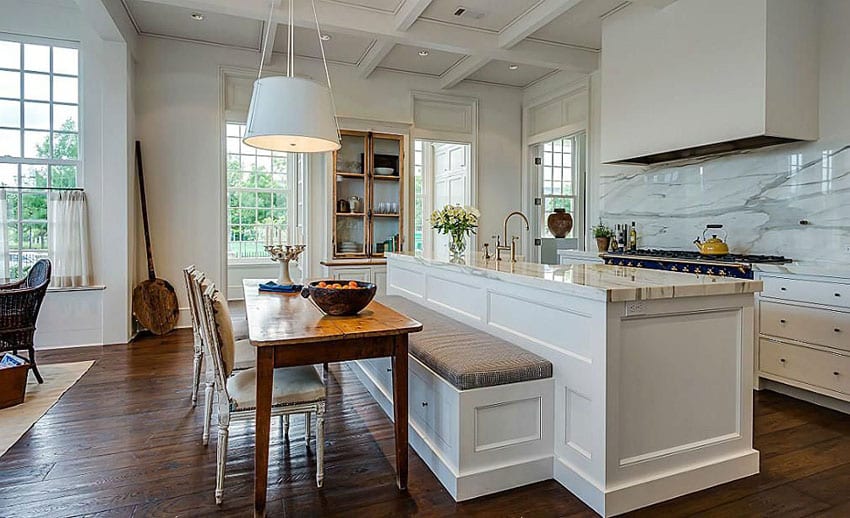
How do you take care of marble backsplash?
Although subject to less wear-and-tear, Calacatta backsplash requires the same care and maintenance as its countertop counterparts. It would be required less often than countertops, however, but methods and techniques are often the same. Here are basic care and maintenance for marble backsplash:
- Seal – Since marble is a porous material, sealing it is important so that moisture doesn’t seep inside the material and cause bacteria build-up, as well as cracks. Use the appropriate sealing agent for your material as recommended. If water doesn’t bead on the surface of your marble anymore, it’s a sign you need to reseal.
- Clean – This material can be damaged by acidic and abrasive cleansers, so it is better to use gentle cleaning agents, or simply use a damp sponge or rag regularly to keep it clean.
- Stains – Remove stains by using a poultice paste on the area or spots with stain. Cover it and leave it on for 12 to 24 hours, remove the paste of with a damp cloth, reapply as needed if stain remains.
- Prevent stains – It is an expensive material, so try to keep it away from citrus and acids as it will etch the material, as well as potential stains such as wines, etc. If you need to work with such ingredients near your marble surface, you can put a plastic or silicone mat, or use a cutting board so it doesn’t directly get in contact with the surface.
Read more about how to clean marble countertops here.
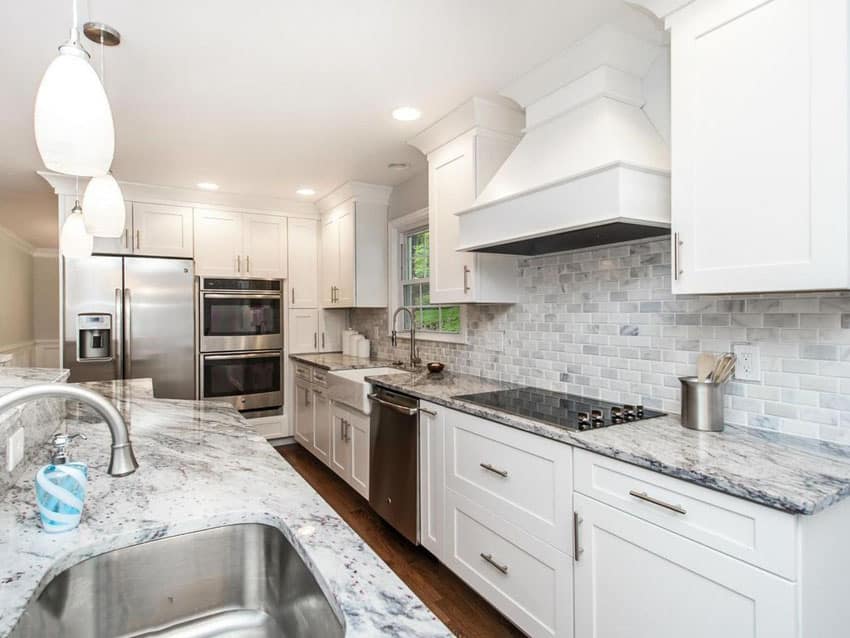
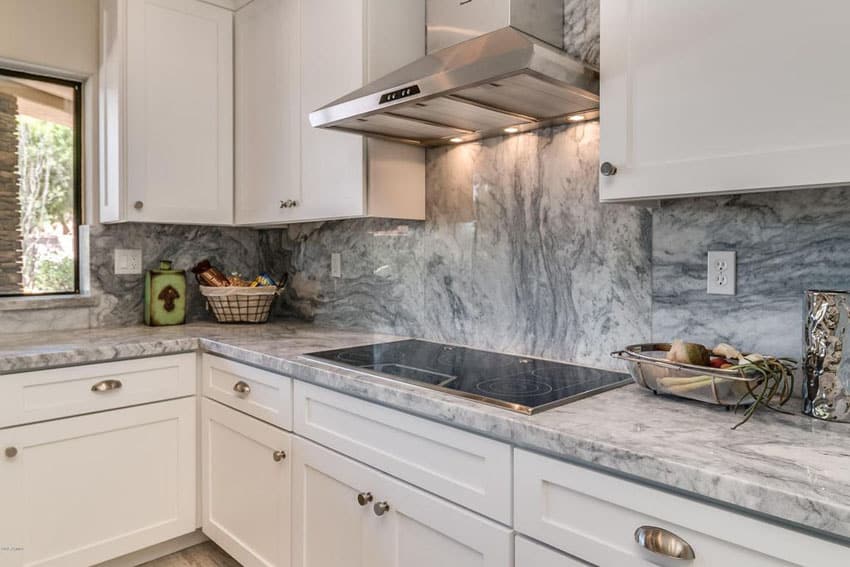
Marble Kitchen Floor Designs
Maybe countertops are not the right fit for the home at hand, maybe this home deserves marble flooring. This will bring massive amounts of class and prestige to a room in seconds. Here the options are limitless.
Full white floors can bring a modern feel and when polished will light up a room. Another choice could be coming up with a pattern using different colors and shapes of marble tiles, while this breaks up the pure white, patterns can be extremely eye catching.
Plus if using black cabinets or appliances in pair with the white Carrara, adding some small black marble tiles can tie a room together. Some white Arabescus is cut with black veins in the tiles that could be a very viable option when installing such flooring.
Is marble good for kitchen floor? Aside from countertop and backsplash applications, marble is also used on floors. You should note that suchflooring material has the same properties as the countertops. They are always unique – each piece is unique, and are timelessly attractive. Because it is expensive, marble adds value to your property if you maintain it well.
Are marble floors durable? You should keep in mind that these floors are porous and needs constant resealing and maintenance, and is also prone to cracks and stains. If you are willing to spend time and money on the upkeep of marble flooring, then you will be able to enjoy its timeless beauty on your floors. If you are unwilling to keep up with its maintenance, however, it is best to use marble on surfaces with less exposure to wear and tear, such as the backsplash or counters.
Alternatively, if you really want the marbled tiles in your culinary zone, you can opt to use porcelain tiles instead. There are many high-quality porcelain tiles with marbled look / patterns available on the market. Not only are they more durable, they are also less porous, easier to maintain, and are more affordable.
